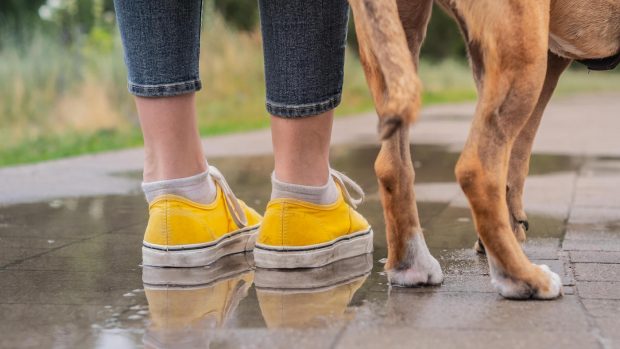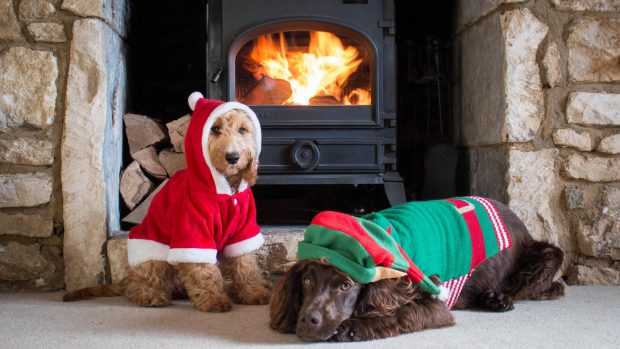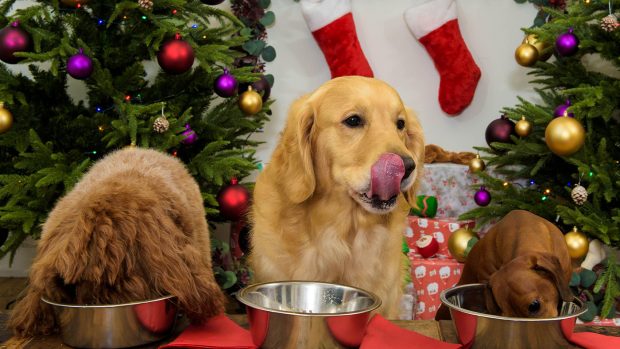Piloting your horse around a dressage test, showjumping course or cross-country course can be stressful enough without the added distraction of a loose dog getting in your way.
While not a common occurrence, several high profile incidents in recent years have brought the subject up for discussion more often than many would like and left several riders questioning the rules.
Andrew Nicholson was quite outspoken after he and Yacabo BK were chased by a dog in the showjumping at Bramham last year, questioning why the judge hadn’t stopped his round, while Olivia Wilmot was left “frustrated” after a similar incident involving a dog still attached to its lead forced her to temporarily pull up her mount Zebedee De Foja during their cross-country round at Gatcombe in 2016.
“It was really fortunate that nothing serious happened as if it had been a few seconds later when we were at the fence it could have been very different,” said Olivia. “Luckily my horse was very well behaved but it definitely affected his confidence and I was forced to take the long route at the next fence.”
Olivia had the majority of her time-faults removed and Andrew’s penalties for knocking down a fence were also taken off but any penalties which are incurred during an incident like this are only removed at the judge’s discretion.
“You can never really say that penalties were incurred because of a loose horse or dog, and you don’t know that they wouldn’t have made those errors if the loose horse or dog wasn’t there,” explained Alexandra Bright, assistant sport manager at British Eventing.
“In terms of the actual competition phases, there are no specific rules regarding loose horses or dogs, as there are lots of factors that could be described as distracting for a horse or rider during the competition, from weather conditions, to spectators, to emergency vehicles moving around the site.”
As such, at BE competitions a rider who is being chased or distracted by a loose dog — or horse as was the case for Imogen Murray and Roheryn Ruby in their dressage test at Oasby earlier this season — must continue with their test or round unless they are stopped by the judge as the decision to stop a horse or rider is only at the judge’s discretion.
Procedure differs slightly at British Showjumping competitions as the rider or judges can stop the round if there is a safety risk such as a loose animal. This is covered under rule 243 ‘stopping voluntarily’ which states: “a competitor who decides that he/she cannot continue his/her round because the course is obstructed or because an obstacle is incorrectly erected may stop voluntarily at that obstacle and signal to the judge by pointing clearly with his whip or hand at the obstruction or obstacle concerned. The bell will be rung and the obstruction, if any, will be removed and/or the obstacle will be checked and if necessary re-erected.
“The competitor will not be penalised unless the judge decides that the course was not obstructed or that the obstacle was correctly erected, in which case the competitor will be penalised as for a disobedience.”
Article continues below…
You might also be interested in:

Subscribe to Horse & Hound magazine today – and enjoy unlimited website access all year round
Any faults gained before the signal is given (by the rider or judges) will still stand and the rider must wait for the bell to be rung before restarting their round.
Similarly at British Dressage events judges or riders can use their discretion to stop a test if it is in the interest of safety. Once it is safe to do so the rider may reconvene their test at the point where it had to be stopped without penalty.
For all the latest equestrian news and reports, don’t miss Horse & Hound magazine, out every Thursday.




